How to Repair (and Stain) Chipped Veneer Furniture
It’s inevitable that old wood furniture gets damaged over time. A lot of them have a thin layer of pretty wood (called veneer) that gets caught on something and chips off. Don’t sweat it though! Here’s how to repair chipped veneer furniture, and, as a BONUS, how to stain the repair (instead of painting it!)
Repairing old furniture can be so fulfilling! Not only do you get to save a beloved piece of furniture from being tossed out, but you also learn new skills and create something beautiful in the process.

We snatched this pretty old desk off of Facebook Marketplace for $50! What a score! But it came with a tiny bit of damage in the form of chipped veneer on the top and damage where the chair scoots in.
I didn’t mind the small damage because honestly, I planned to take it apart and make nightstands. Have you seen those makeovers?
This makeover on how to repurpose desks into tall skinny nightstands is my favorite one I’ve done!
But after I got it home I decided that I wanted to keep it for myself in its original desk form, AND I wanted it stained to complement the wood tones on my recent chippy blue painted hutch that is going in the same room.
I think it turned out pretty darn good! I’ve been using the desk now for a couple of weeks and I honestly forget that there used to be a chip in the veneer! Check out more painted desk ideas here.
Here’s how I did it!
Supplies Used to Repair and Stain Chipped Veneer Furniture
As an Amazon Associate, I earn from qualifying purchases. I also may earn from other qualifying purchases with other companies or get free product to review and use. All opinions are my own.
- 220 Grit Sandpaper (this is the best and my favorite sandpaper)
- Bondo Wood Filler and Bondo Spreader
- Old piece of cardboard or scrap piece of wood (to mix Bondo on)
- Utility Knife (if you want to make wood grain marks in your Bondo)
- Gel Stain (this Java Gel Stain by General Finishes is my favorite and what I used)
- Lint-Free Rag or cut up t-shirt
- Latex Gloves
- Polyurethane (This is my favorite spray version! The spray is the best I’ve found! I don’t recommend Varathane oil-based in the spray can. With two different cans, it kept spitting large drops of polyurethane all over. It was a disaster. )
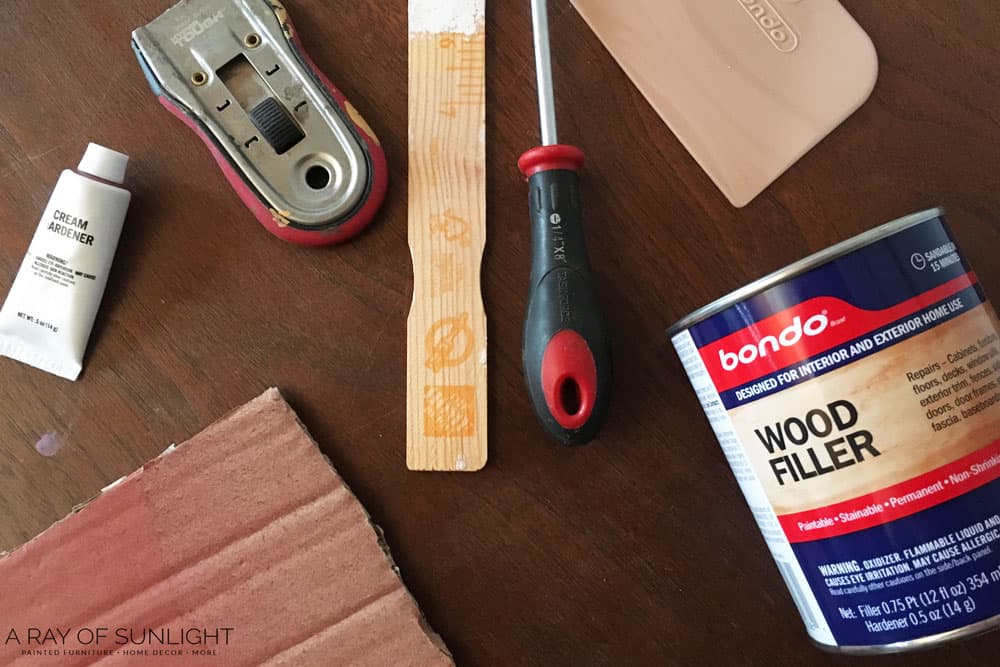
Prepping the Damaged Area
For the best results, scuff sand the damaged area with 220 grit sandpaper. This will just make it so the Bondo will stick really well.
If your veneer is loose or pretty damaged, you might want to remove all of it instead of filling in the modding veneer. Here is our video and tutorial on the insanely easy way to remove veneer.
But there are still other methods on how to fix veneer that is lifting, check out this post to learn more.
Bondo Wood Filler is a two-part wood filler that dries very hard very quickly. So it’s perfect for large repairs and also chipped veneer repairs.
Here’s my honest Bondo wood filler review to learn more.
Check out our post on repairing veneer with wood filler for more info!
If you’re painting the damaged area, you can use the regular Automotive Bondo, All-Purpose Bondo, or the Bondo Wood Filler.
But when you need to stain the damaged area, it’s best to use the Bondo Wood Filler because it dries a natural wood color.
Learn more about the Best Wood Fillers for furniture here!
You’ll need to work quickly because it dries so fast. You have about 5 minutes to work with it once you start mixing. After about 5 minutes it will start to harden and it will be hard to work with.
After about 30 minutes it will be dry and then you can sand it down.
How to Mix Bondo Wood Filler
I like to mix my Bondo on a piece of cardboard or a piece of scrap wood.
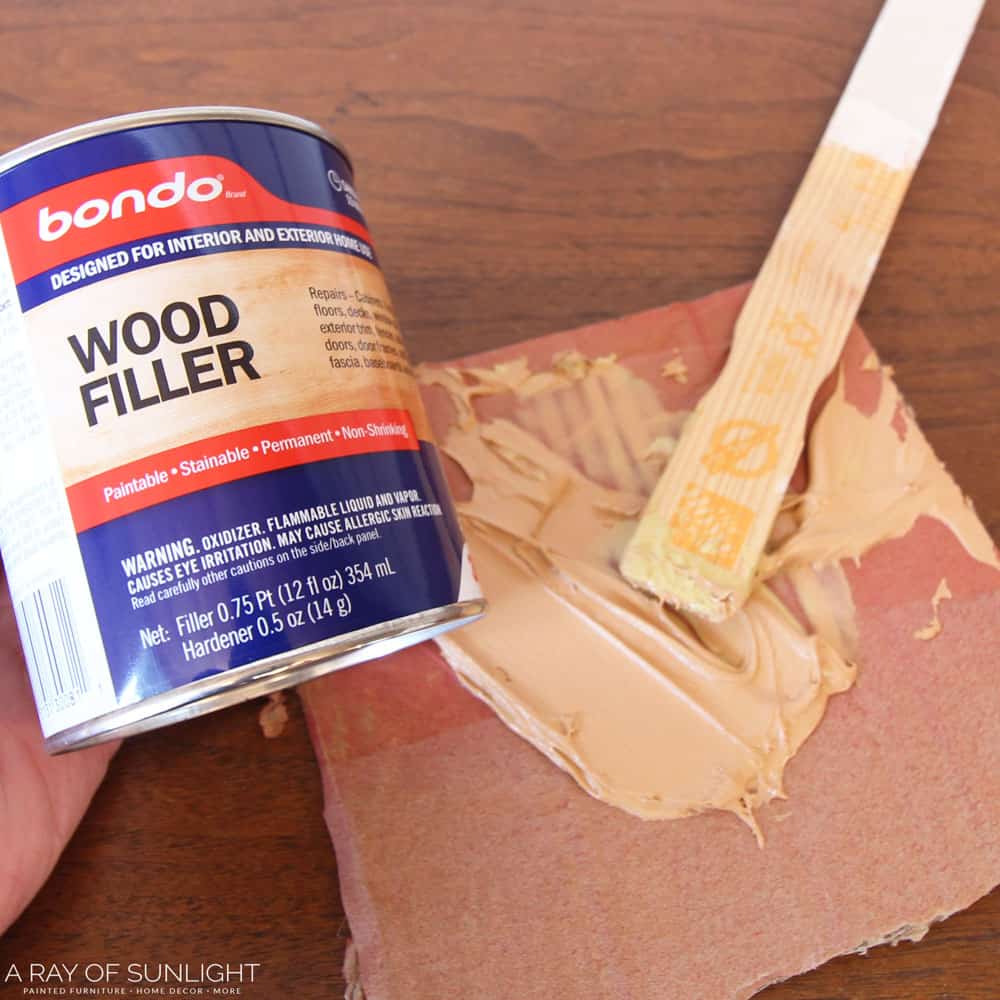
Simply get a blob of Bondo base out of the container and put it on the cardboard.
Then squeeze a little bit of hardener (from the tube) onto the Bondo. (Read the back of the can for more detailed instructions on how much of each to use).
Then mix the two parts together until it’s one even color.
Use a flat-edged tool like the Bondo spreader or a plastic putty knife to spread the Bondo all over the damaged area. (I like to fill the damage with more than needed so I can sand it down completely smooth and flat)
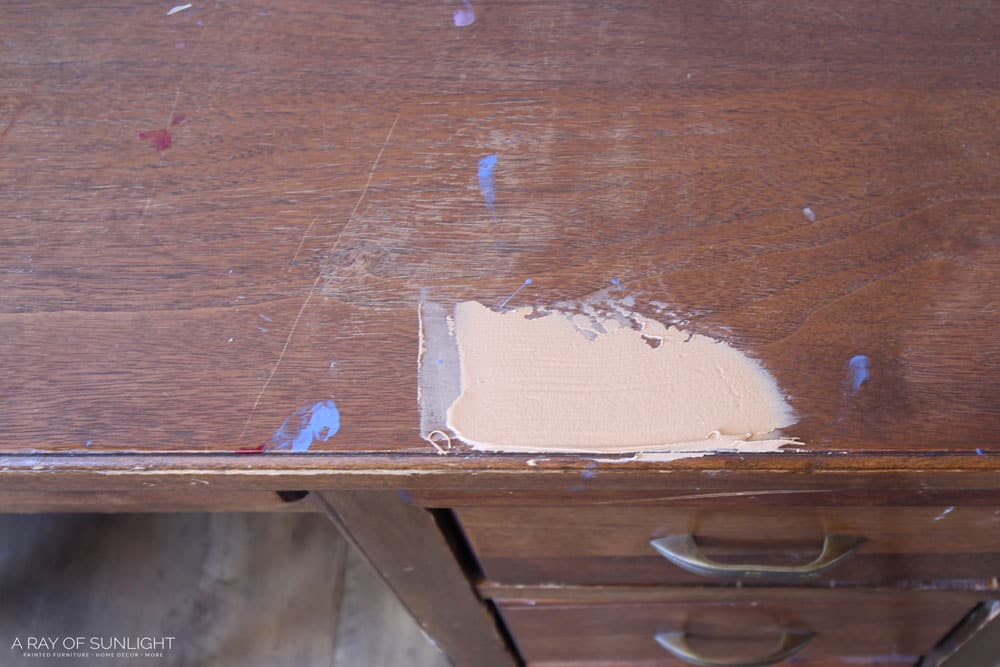
If you have a larger repair to make, click here to learn how to fix a chipped wood corner with Bondo!
Get the Secrets!
Grab this super convenient How to Repair Furniture Ebook with all of our secrets on how to repair furniture for only $14.
You can print it out and have instant access whenever you come across damaged furniture, and know exactly how to fix it!
Click on the picture of the book to purchase!
Drying and Sanding Bondo
Once the Bondo is dry (about 30 minutes later) you can sand it down smooth with the rest of the wood veneer.
I like to sand most of it with 100 grit – 150 grit sandpaper first and then move my way up the grits until I get to 220. I end on 220 grit sandpaper for the best surface for staining.
This 3M Pro Grade Advanced Sandpaper is the best brand/type of sandpaper.
It’s a bit more expensive than the cheapest sandpaper out there, but it holds up and lasts longer. And it doesn’t clog as fast either!
Here’s our guide to help you choose the Best Sandpaper for Furniture Painting.
If you’re working with a large area and a flat surface, you can use a power sander instead of sanding by hand.
Read this post to learn about the Best Sanders for Furniture!
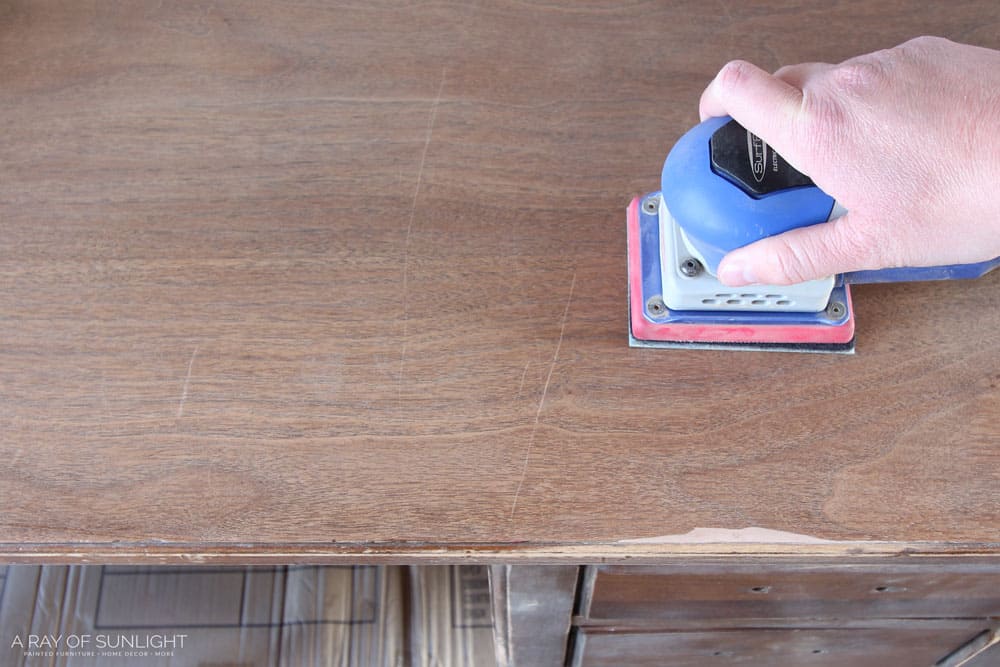
**Note: I sanded the entire top of this desk down to bare wood because of the scratches dings and nail polish on it. You don’t have to remove the finish surrounding the damaged area though! But if I didn’t sand the entire top of the desk, I would have applied at least one coat of Java Gel stain on the entire top to give it all one even coat.
How to Add Wood Grain Marks
If your wood veneer has a lot of wood grain in it (like oak wood) then you can recreate the wood grain with a utility knife.
Simply put little and long random marks all over the veneer with a utility knife.
Be sure to sand it down a little bit with 220 grit sandpaper to make it nice and smooth again.
*Side note: If later on, you decide to paint your wood veneer, you can learn How to Hide Wood Grain When Painting here!
Staining Bondo Wood Filler with Gel Stain
Now it’s time to bust out the gel stain.

It’s super important to use Gel stain instead of regular wood stain! Gel stain is thicker and formulated to sit on top of existing surfaces. Wood Stain is made to soak into the wood.
The Bondo Wood Filler can’t accept wood stain the same way that wood can (plus all types of wood will take the same color of wood stain a little differently too!)
So, for best results when staining Bondo Wood Filler, use a gel stain. I used Java Gel Stain by General Finishes for this repair.
Check out our blog post about staining wood filler to learn more about the different techniques for staining wood filler.
(Actually, I decided to stain the whole entire desk in Java Gel Stain (you don’t have to strip paint and the old finish all the way off to use gel stain!!) for a really quick updated look)
How to Use Gel Stain Over Wood Filler
- Use a stir stick to mix the gel stain really well.
- Put on your latex or vinyl gloves or else your fingers will get stained!
- Dip a lint-free rag into the gel stain.
- Wipe the gel stain onto the wood filler and the surrounding areas
- Let the gel stain sit for about 30 seconds to start drying and then wipe the excess away with a clean lint-free rag.
- Let dry for 24 hours and then apply a second coat.
Tips and Best Practices for Using Gel Stain
- You can brush it on or wipe it on. I like to apply thin coats with a lint-free rag to prevent streaks or brush marks. Check out the best brushes for staining wood here.
- If you apply more gel stain before the gel stain completely dries, the new coat of gel stain will lighten the (still wet) first coat. So make sure the gel stain is completely dry before you put a second coat of gel stain over it!
- Dispose of your rags properly! Do not throw wet stained rags into the trash, as they could combust. I personally like to hang mine up outside on the clothesline to dry completely before disposing of them.
Check out this blog post to learn more about how to stain wood with a rag.
Sealing Gel Stain with Poly
Even though the back of the gel stain can says that you don’t need to seal it, ignore it and seal the gel stain.
The very first time I used gel stain over a stained dresser, I didn’t seal it with poly. A few months later I ended up with a nice big scratch in the gel stain, on the top of the dresser.
The polyurethane will protect your stained surface from getting easily scratched!
I personally like to use this Minwax oil based poly in the spray can. It sprays beautifully and is really easy to use!

**In a pinch, I tried the Varathane brand of oil-based poly in the spray can and it spit and sputtered all over. (I tried two separate spray cans and both spit large drops of poly all over). Despite shaking them very well before spraying and shaking the can a lot while I was spraying.
So I switched back to the Minwax brand and I was reminded by how well the Minwax Oil Based poly sprays from the spray can!
If you don’t want to spray, this Minwax Wipe on Poly is my next favorite way to seal Gel Stain. I wipe it on with a lint-free rag, laying it on thick and only wiping it on (and not touching it anymore than when I wipe it on).
Let your poly dry for at least 24 hours before setting anything on it. Then make sure to be very careful with your fresh new stained finish for about a month.
It takes about a month for the products to cure (dry into the most durable surface).
Enjoy your masterpiece!
Learn more about how to repair damaged wood finish and ways to preserve your furniture’s beauty and durability.
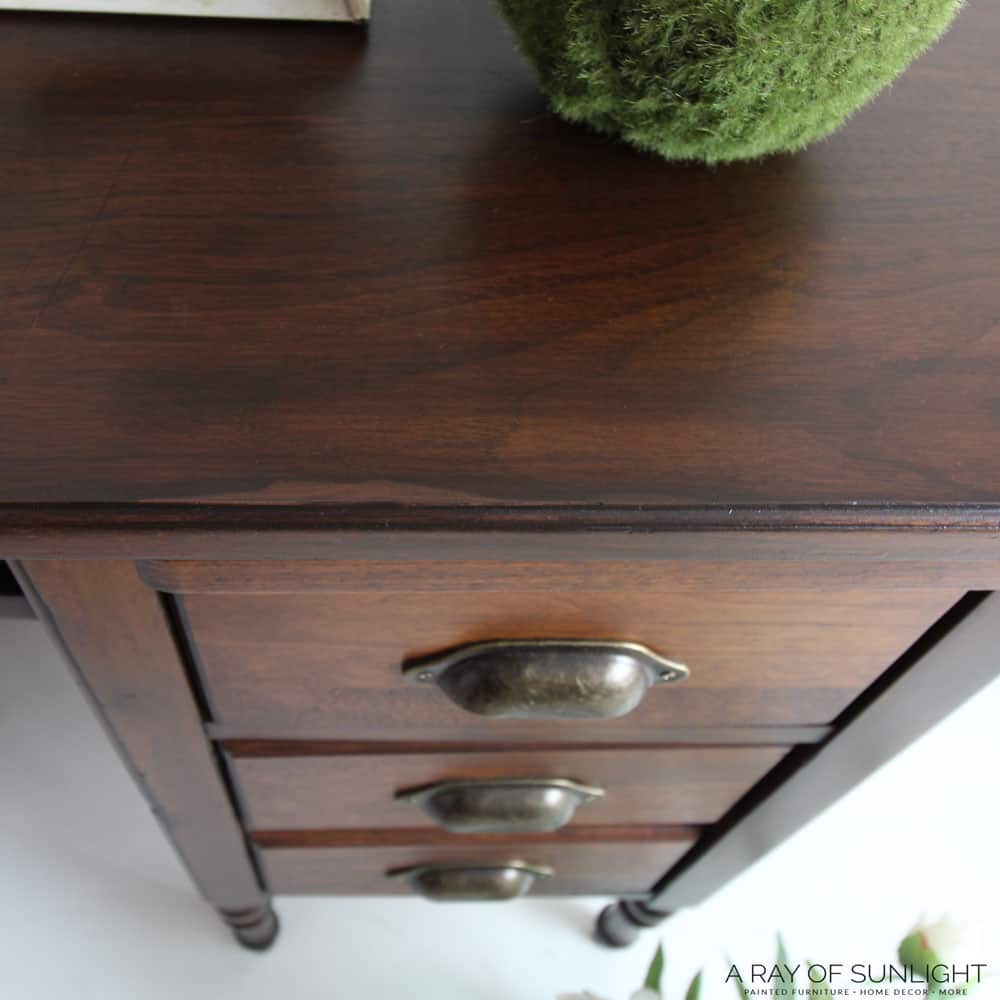
More Before And After Makeovers
Click any of these “before” photos below to view the “after” of that makeover.
See what this gel stained desk looks like now in this how to stain wood darker post!
Can I use gel stain on any type of wood?
Yes, gel stain can be used on most types of wood, including oak, pine, cherry, maple, and more. However, it may not work as well on woods with a very tight grain, such as teak or rosewood.
It’s always best to test a small area first to see how it will react with your specific type of wood and before applying the gel stain to the entire piece of wood.
Additionally, if you use gel stain on raw wood, you may want to apply a wood conditioner before the gel stain to create an even finish. This involves using a wood conditioner to help the wood absorb the stain more evenly.
It’s important to do your research and follow the instructions for your specific type of wood when using gel stain.
Can I mix different colors of gel stain together?
Yes, you can mix different colors of gel stain together to create a custom shade. This is a great way to get the exact color you want for your project, especially if you have a specific vision in mind.
However, it’s important to remember that mixing too many colors together may result in an unpredictable outcome.
It’s also a good idea to test the mixture on a small area before applying it to the entire surface.
To mix different colors of gel stain, simply pour a small amount of each color into a clean container and stir them together. Start with a little bit of color at first, as you can always add more if needed.
Also, keep in mind that the more coats you apply, the darker and richer the color will become.
More Wood Stain Tutorials
- How to Restain Wood
- Wood Stain Repair
- How to Remove Wood Stain
- Staining a Dresser Darker
- Best Wood Stains for Refinishing Furniture
Follow us on YouTube to get more tips for painting furniture.
Or share your project with us on our Facebook Group and be part of our community. See you there!





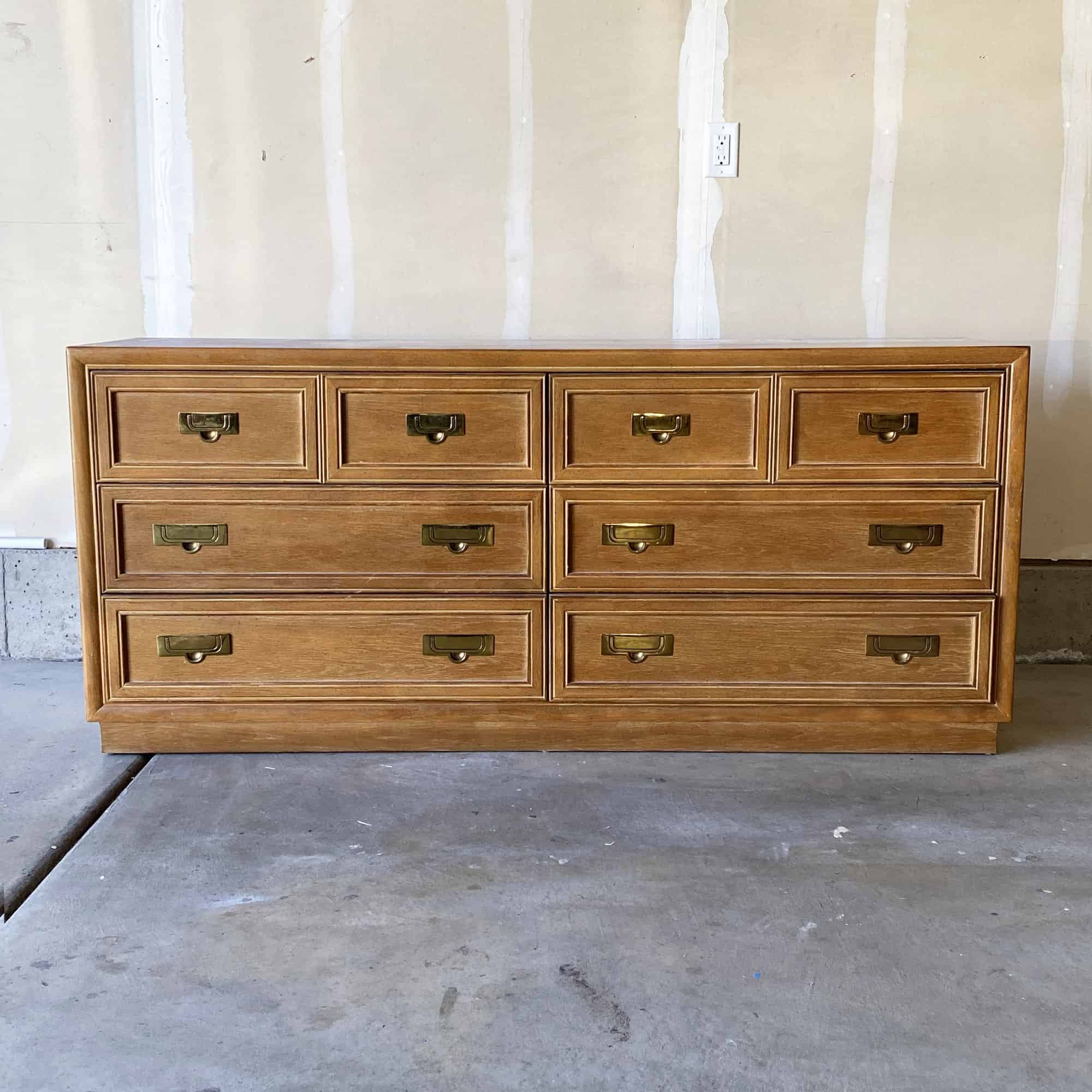
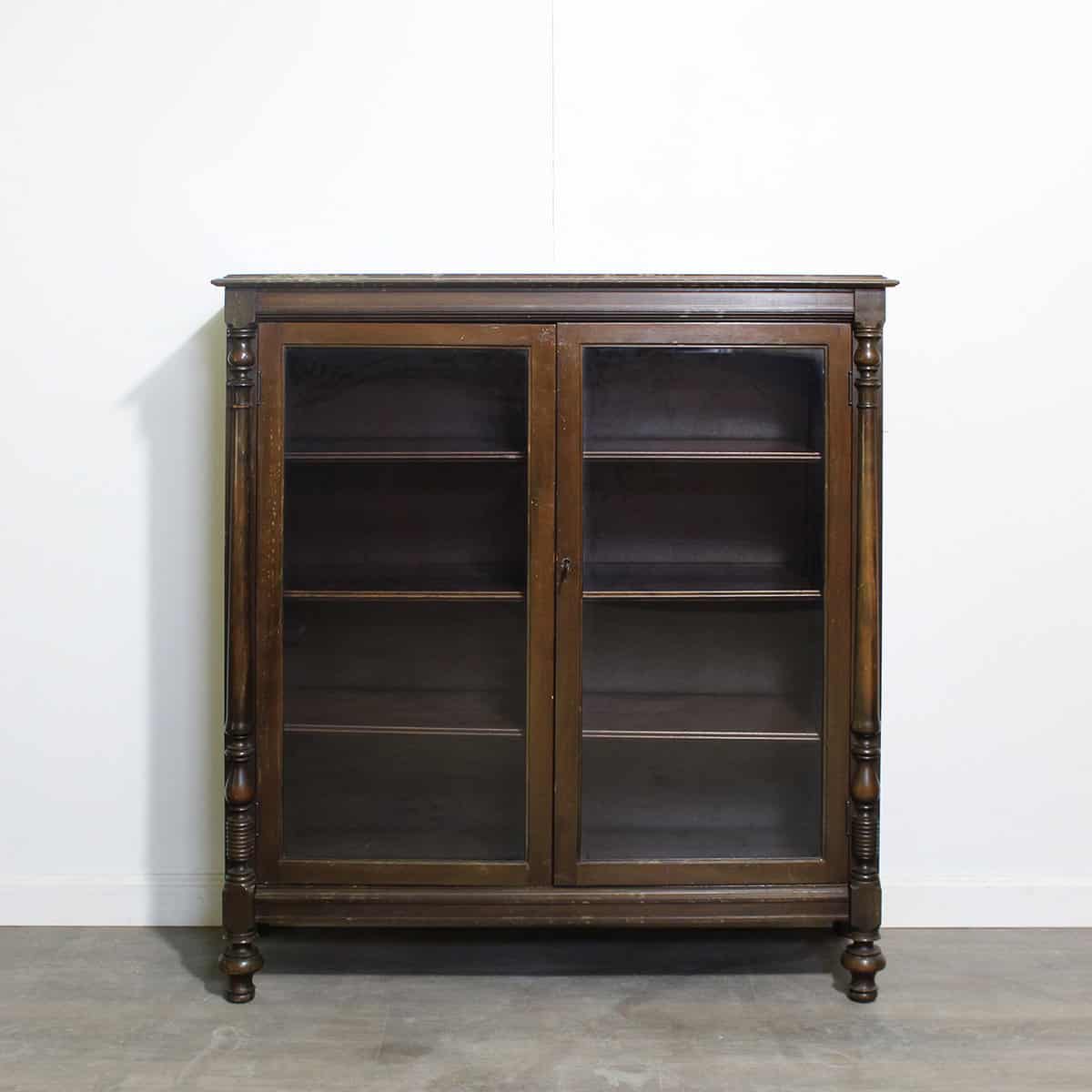
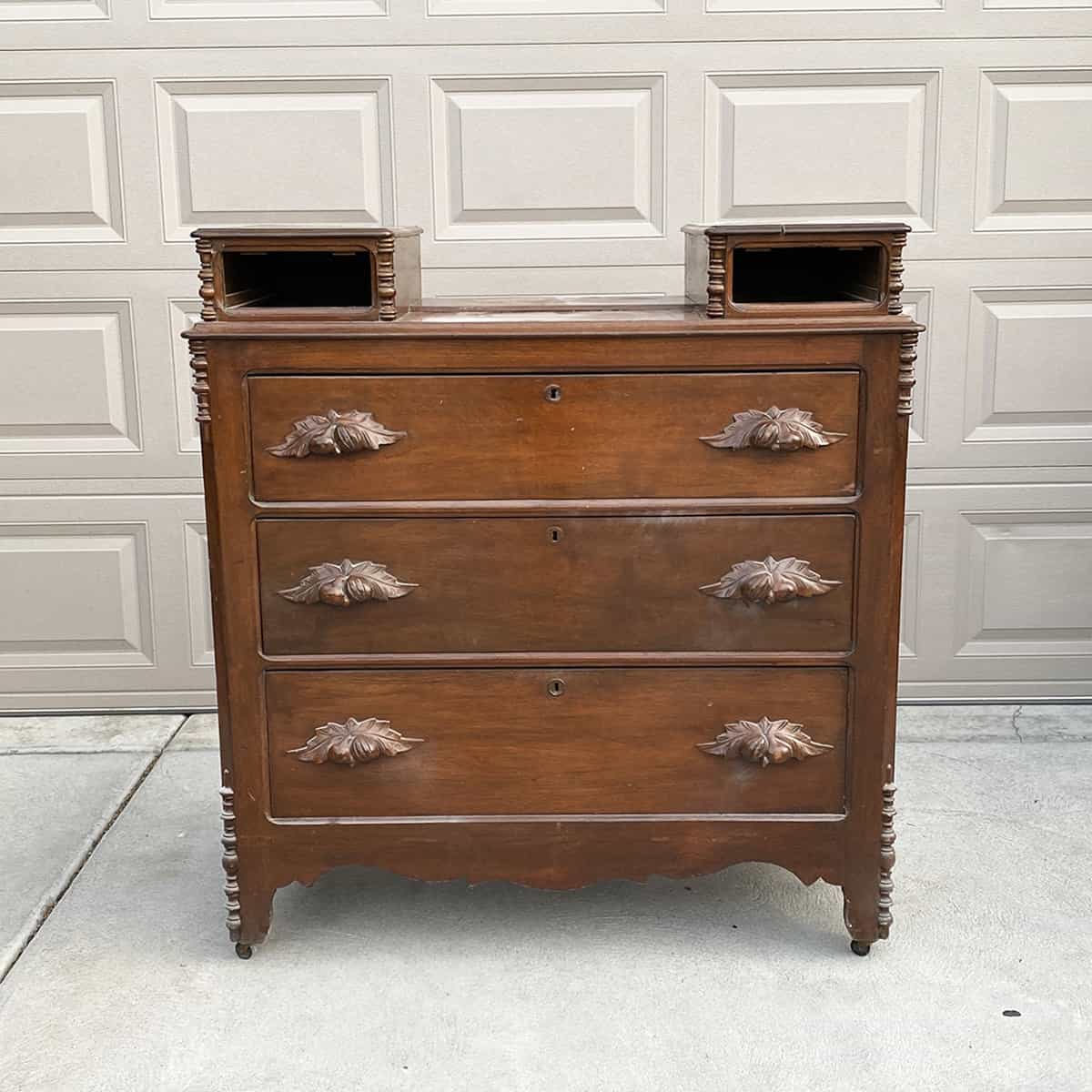
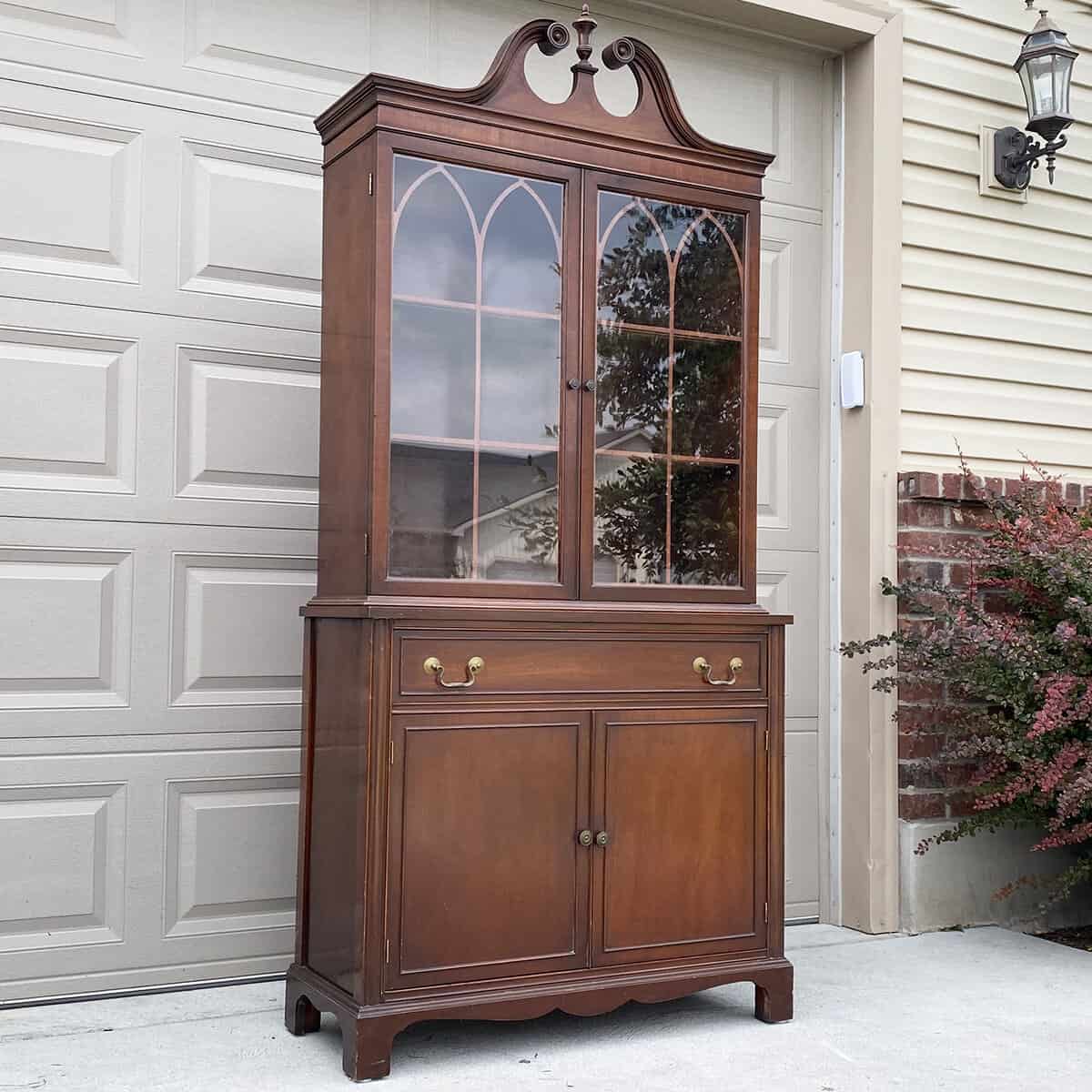
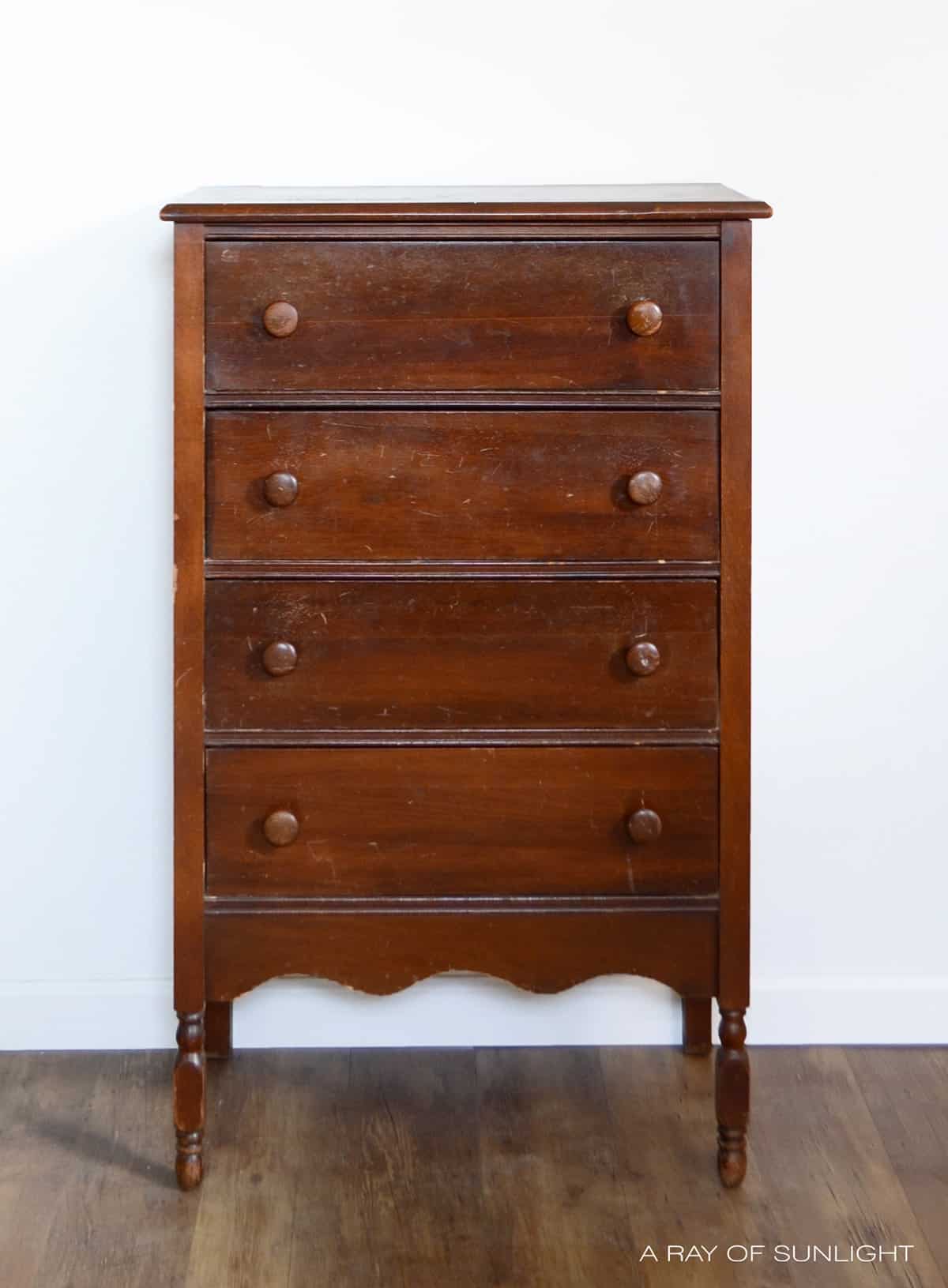

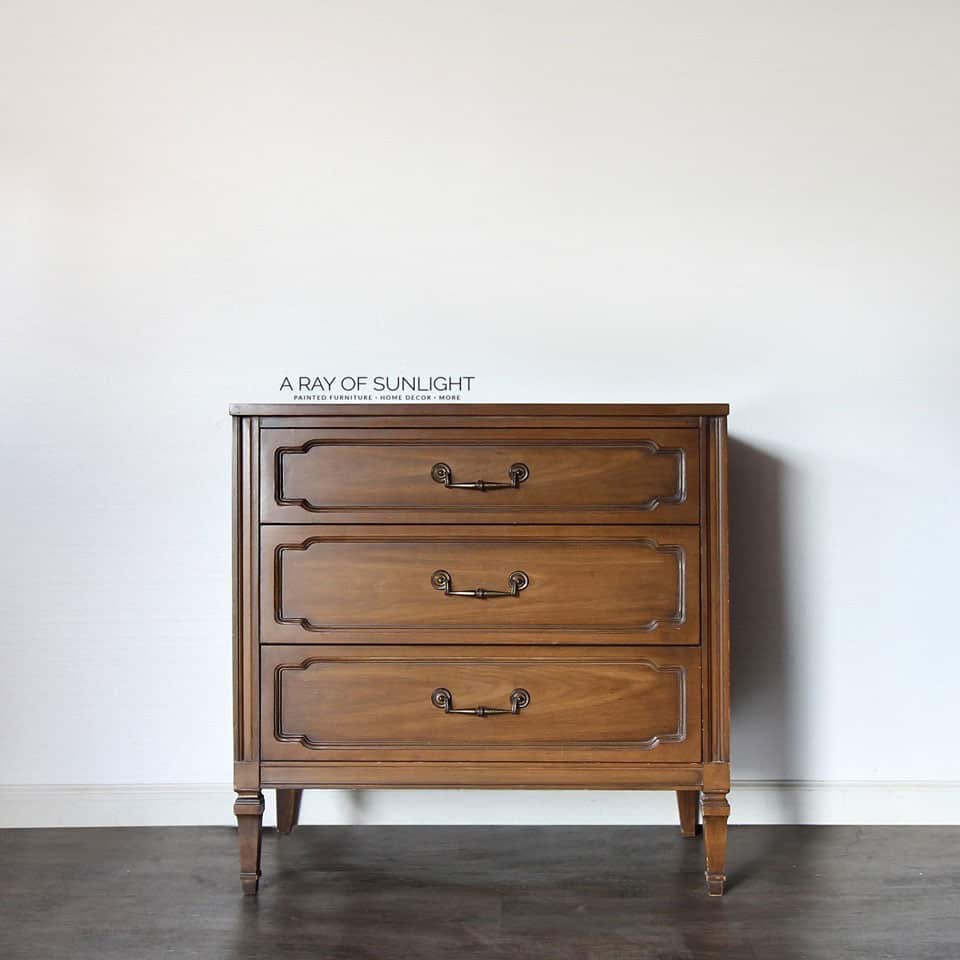
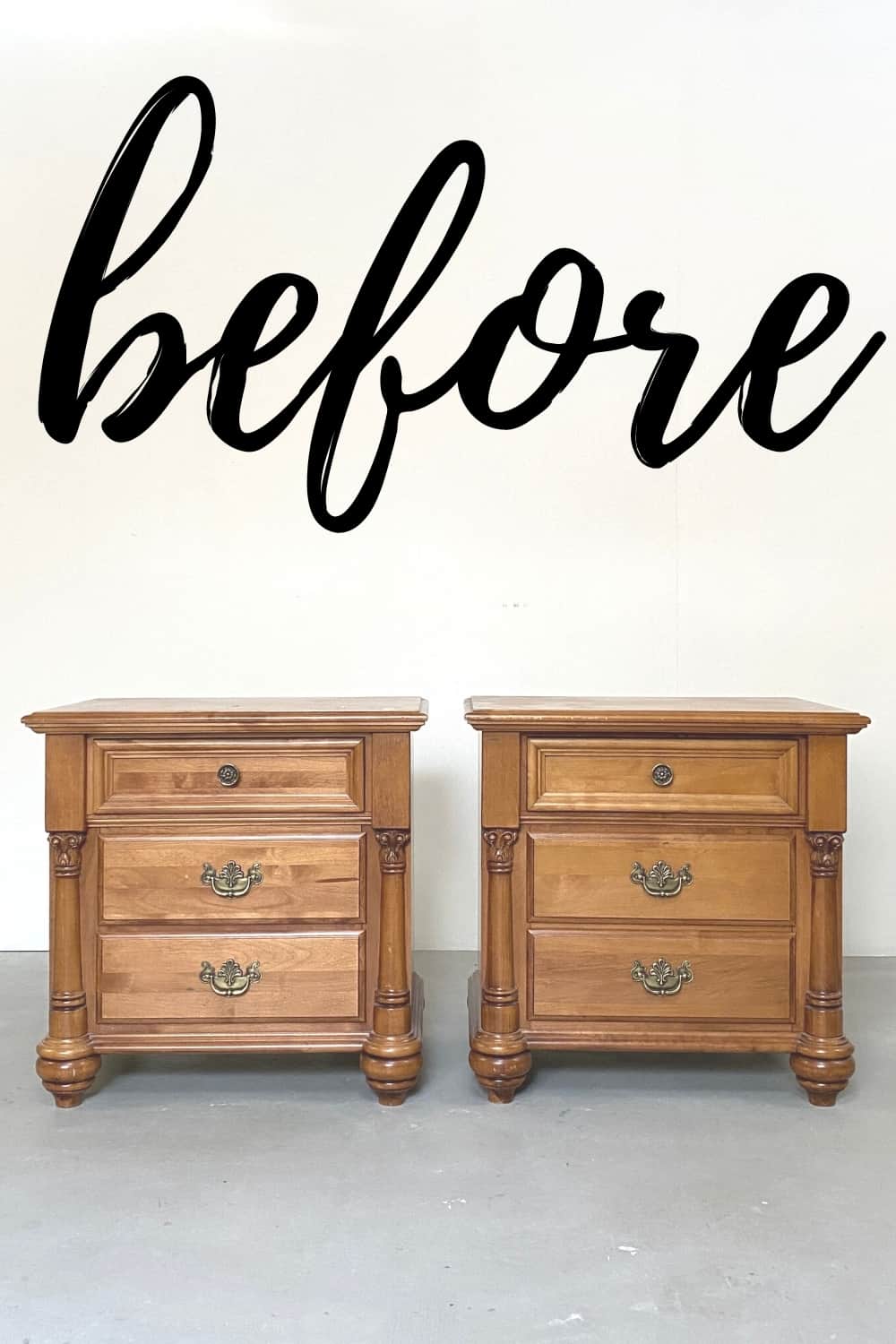
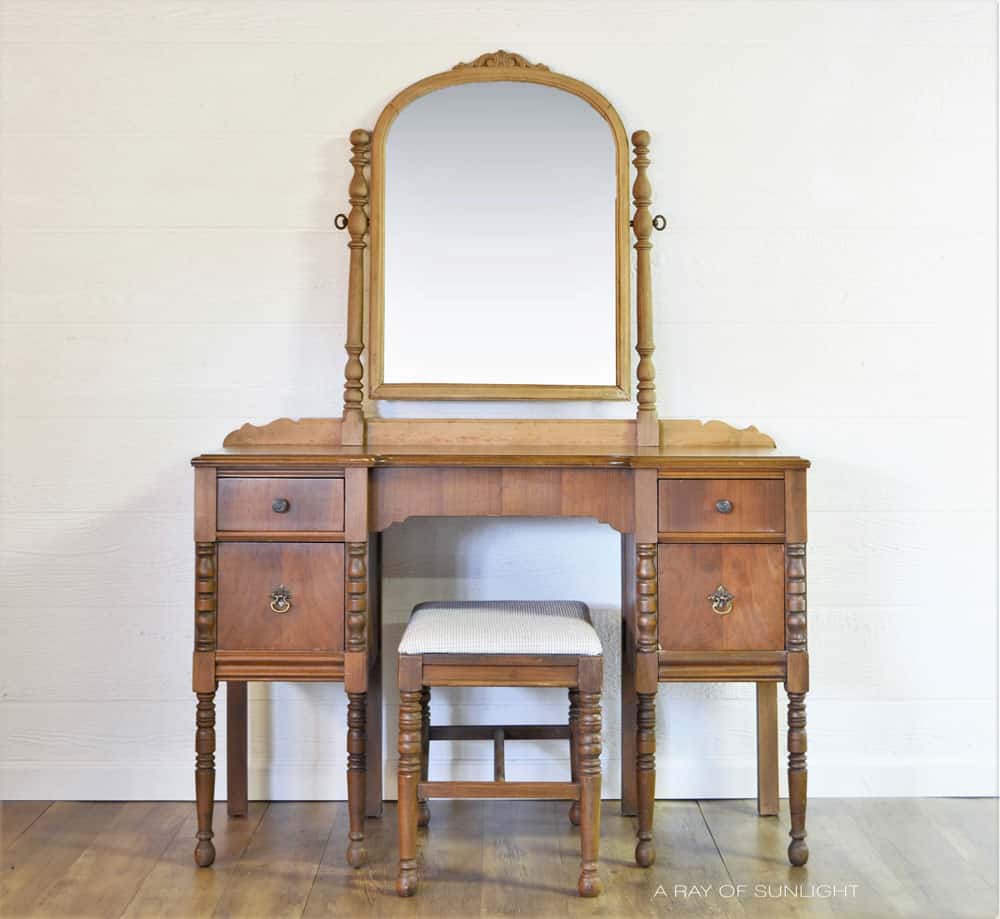







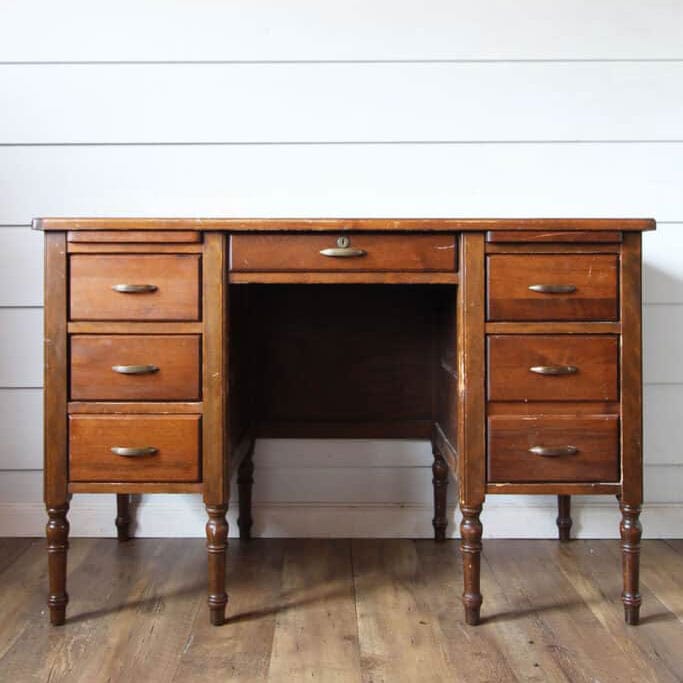
Hi – my Dad was a cabinetmaker and he also used Bondo occasionally for repairs. One of the tricks he used to stain the Bondo was mixing with powdered stain..
That sounds like a brillaint idea!
The most important advice in this fine piece is the caution about how to dispose of your work cloths. Do NOT simply drop them in a wastebasked. One of our friends who is a furniture maker in his oilfield equipment lab – lots of down time while tests run – did precisely that – just dropped them into a wastecan. Fortunately, it was metal, BUT they were awakened in the middle of the night by a call from the fire department that his lab was ablaze. Source? Combustible rags. Do not do it. I can’t wait to try the repairs I learned how to do here – antique chairs with broken/missing trim. Thanks!
How would you suggest that I go about repairing the bottom of my weather damaged wood veneer front entrance door?
I originally thought of installing a screwed-in-place, (8″ high), metal kick plate over the damage, -but the door is 48″ wide and, besides, I really wanted to retain the natural wood look of my residence.
Also, taking this very heavy door off the hinges is not an option.
Much appreciated.–WMM.
Without seeing photos of the door, I unfortunately have no direction to tell you what I would do.